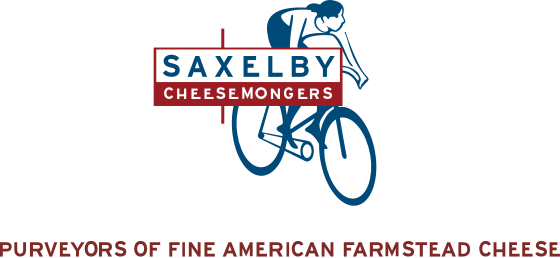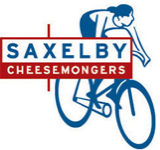![]()
For the love of American cheese (and not the orange square kind), Saxelby Cheesemongers would like to present you with our very own five minute history of the American artisan cheese movement. In the course of a subway ride, standing in line at the coffee shop, or (dare we say it?!) a trip to the bathroom, you too can be an American cheese expert! Read on to learn more about the birth, death, and re-birth of artisan cheesemaking in America.
Way back in the day, cheese making in the United States was very reflective of the immigrant populations that settled in different regions of the country. In New England, the focus was on cheddar and other cheese styles made in the British Isles. In Wisconsin, which was largely settled by Swiss and German immigrants, cheeses of the same provenance – Limburger, Gruyere, and the like flourished. In California, the Italian and Spanish immigrants made hard nutty table cheeses that mimicked the staples of their homeland.

Remnants of American cheese making from before the Second World War remain, but they are few and far between. Cheddar making cooperatives like Cabot Creamery and Grafton Village Cheese are churning out blocks of cheddar in Vermont, the country’s last Limburger plant is still selling their stinky wares in Monroe, Wisconsin, and the Vella Cheese Company resurrected their Mezzo Secco, an Italian-style table cheese that was designed to withstand the warm weather of California before the advent of refrigeration.
After World War II, food production in the US changed drastically. The same science that had been applied to food in order to supply our military with shelf stable, essentially bulletproof food (pun definitely intended!) hit mainstream America like a freight train. Food science, nifty packaging, and standardization won out over a more regional, diversified food supply. Local cheese makers suffered, as cheese giants like Kraft took over more market share, buying up small producers or simply making it financially impossible for them to compete with such a large, vertically integrated system. The proliferation of food advertising (now on a national scale thanks to television!!) certainly didn’t help the little guys either. Marry all of that with the fact that more and more young people were leaving family farms for jobs in the city and houses in the suburbs, and we ended up with, well, a lot of Kraft American Singles in the fridge.
Fast forward to the seventies and early eighties – The back to the land movement was taking hold in places like California, and Rachel Carson’s ‘Silent Spring’ was on bookshelves across the country sounding the alarm that there was indeed a dark side to all of that ‘science’ and ‘progress’ – in our food system and elsewhere. This period marked the arrival of the first wave of American artisan cheese pioneers – mostly in the form of women milking goats – Laura Chenel and her chevre, Mary Keene and Humboldt Fog, Alison Hooper and the birth of Vermont Butter and Cheese, Judy Schad’s Capriole Dairy, and Laini Fondiller’s array of cheeses at Lazy Lady Farm. These pioneers were literally re-inventing the cheese wheel, one turn at a time, as they did not have access to much in the way of supplies, recipes, or equipment. But by god they did it, and what they learned they shared with their cheesemaking colleagues, allowing the seeds of this new artisan cheese industry to begin to sprout.

In the nineties, there was another, bigger boom of domestic artisan cheesemaking. Now the country’s appetite for European-style cheeses had been whet, largely influenced by chefs as well as Americans’ travels abroad, and there was no turning back. In Vermont in particular, there was a mini explosion of sheep dairying thanks to David Major of Vermont Shepherd. He traveled to the Pyrenees region with his family and learned to make the traditional sheeps’ milk cheeses native to that area. His cheese was met with such success that he convinced other farmers in Vermont to begin making sheep cheese and taught them his methods. In Connecticut, Liz McAlister was getting started with Cato Corner Farm, and Coach Farms and Old Chatham Sheepherding Co were founded in New York.
The early 2000’s brought us some cheese makers that are staples in the Saxelby Cheese selection – Uplands Cheese Company, Jasper Hill Farm, Blue Ledge Farm, Twig Farm, and a whole host of others! People old and young were turning to cheesemaking (usually as a second career) as a way to make a living while farming and pursuing a more sustainable lifestyle. Mike Gingrich, one of the founders of Uplands Cheese Company had been a software engineer at IBM, Michael Lee of Twig Farm turned from a career in fine art to making fine goat cheese, and Mateo Kehler of Jasper Hill Farm was an activist turned business school graduate with a vision to transform the working landscape of Vermont’s northeast kingdom.

Covid-19 and its accompanying effects wrought havoc on the artisan cheese industry. To find some security against an uncertain market, many cheesemakers put their milk into firm aged cheeses like gouda and cheddar, rather than soft and small-format cheeses that have a short shelf life, such as washed cheese. But the market swung the other way; as online and grocery delivery flourished, so did small-format cheeses and individually packaged wedges.
The labor power to make cheese in rural areas—and to move it through urban areas—was threatened by lockdowns and restrictions on local and international travel. Many American cheesemakers host young people from across the world who are interested in learning the ways of making artisan cheese. Without that support, cheesemakers were left struggling to meet an increasingly unpredictable demand.
In 2022, the situation has improved. Producers have made important changes to adjust to the new world, even as Covid’s effects linger through inflation and supply chain challenges. One silver lining: As international shipping and cross-country freight became mired in Covid restrictions, cheesemakers were able to work directly with their local communities, bringing us full circle back to the regionalism of pre-World War II America.
Saxelby Cheesemongers opened in 2006 with a selection of about 50 cheeses from 20 or so farms. We now work with over 50 producers, and carry over 100 cheeses at any given time, though our selection fluctuates with the seasons. Many of the cheesemakers we work with now were not even around when we started. The American artisan cheese boom continues to plow ahead, though there is more of a healthy dose of realism about what it is to be a cheesemaker than perhaps there was 10 years ago. Being a cheesemaker is not all bucolic romance. To be a good cheesemaker, one must be a scientist, a mechanic, a meticulous record keeper, a watchful chef, a fastidious cleaner, and perhaps most of all, a good dishwasher!
At Saxelby Cheesemongers we celebrate the growth and proliferation of American artisan cheese thanks to YOU, the people who love to eat these cheeses, and who support the businesses and farms that make and sell them.

